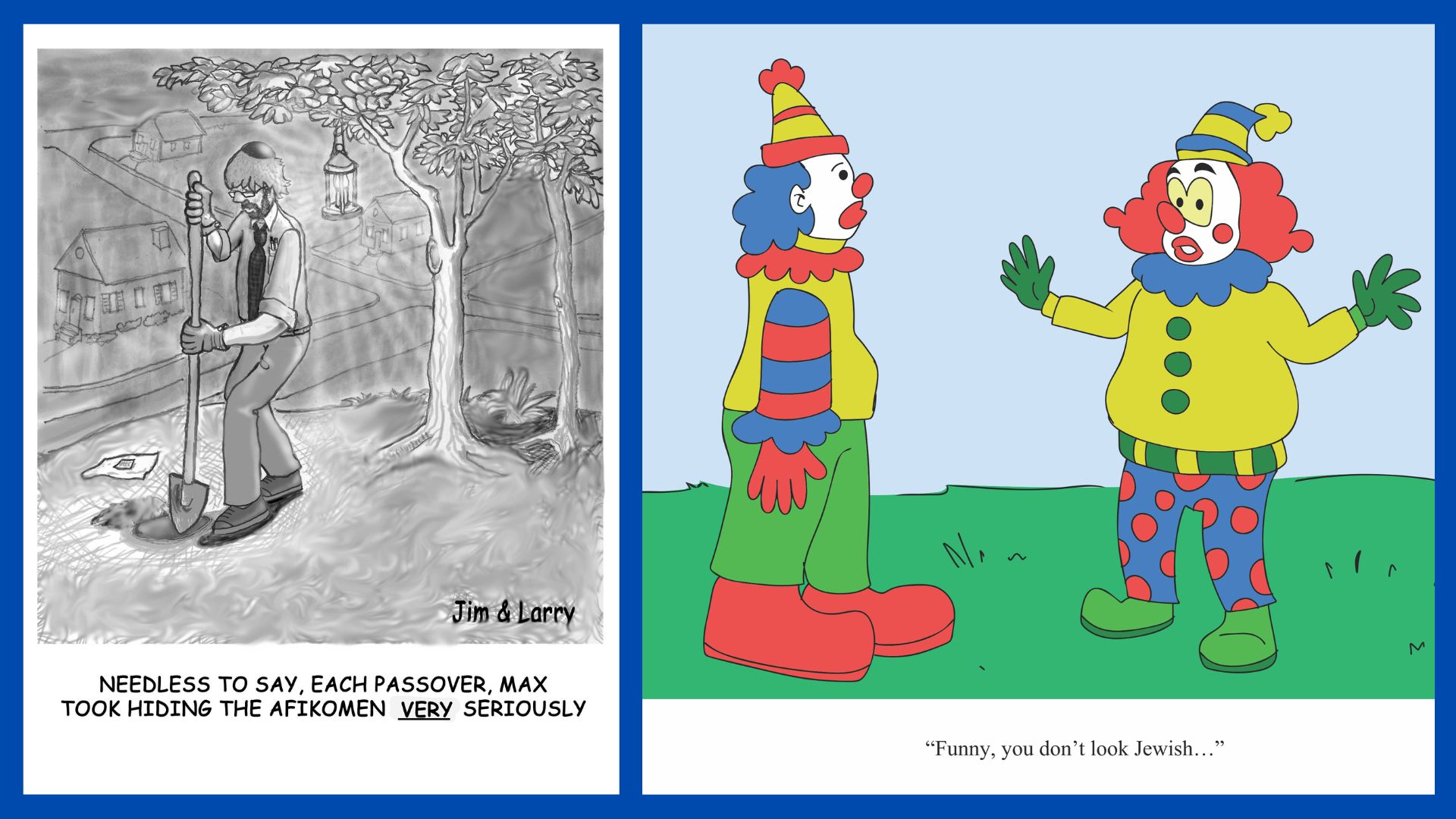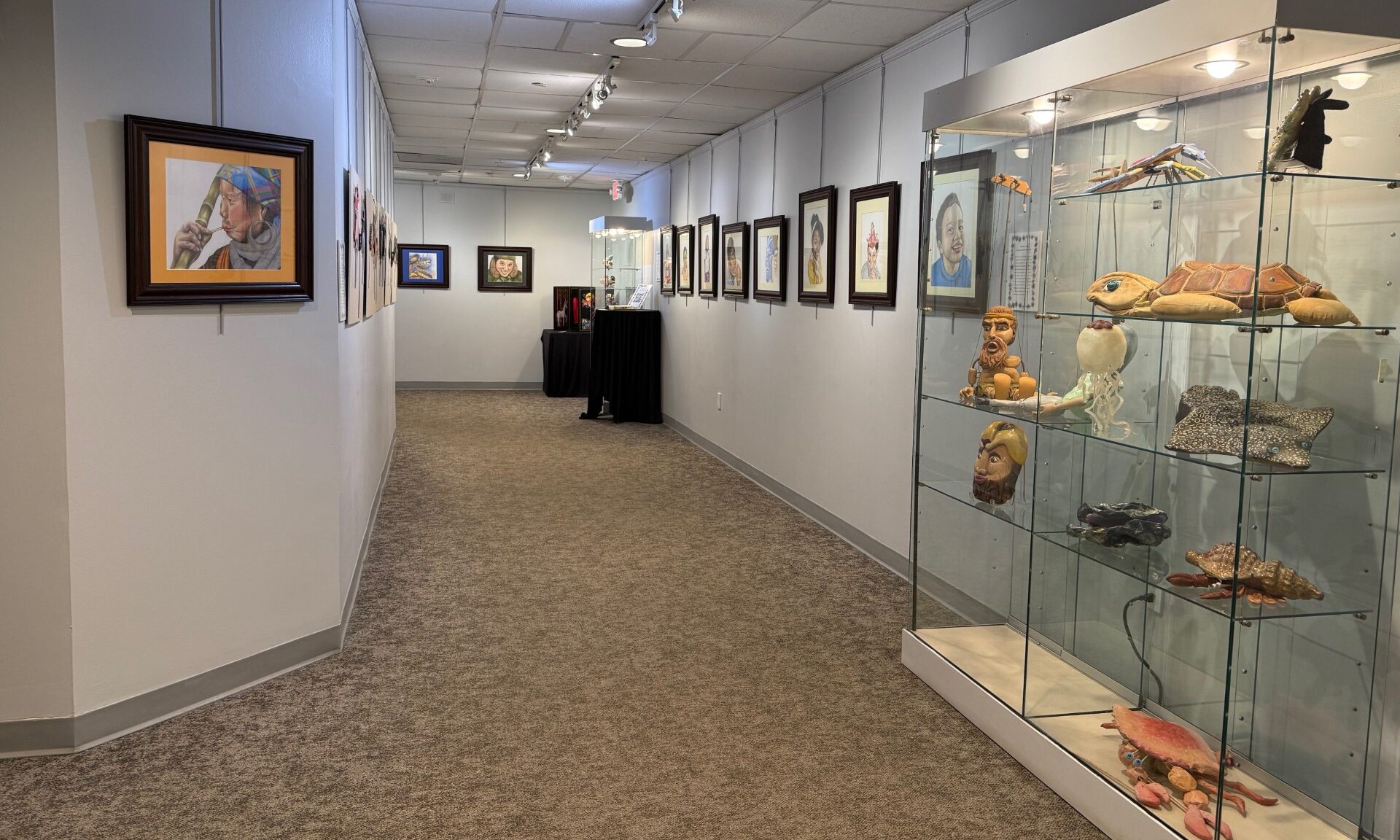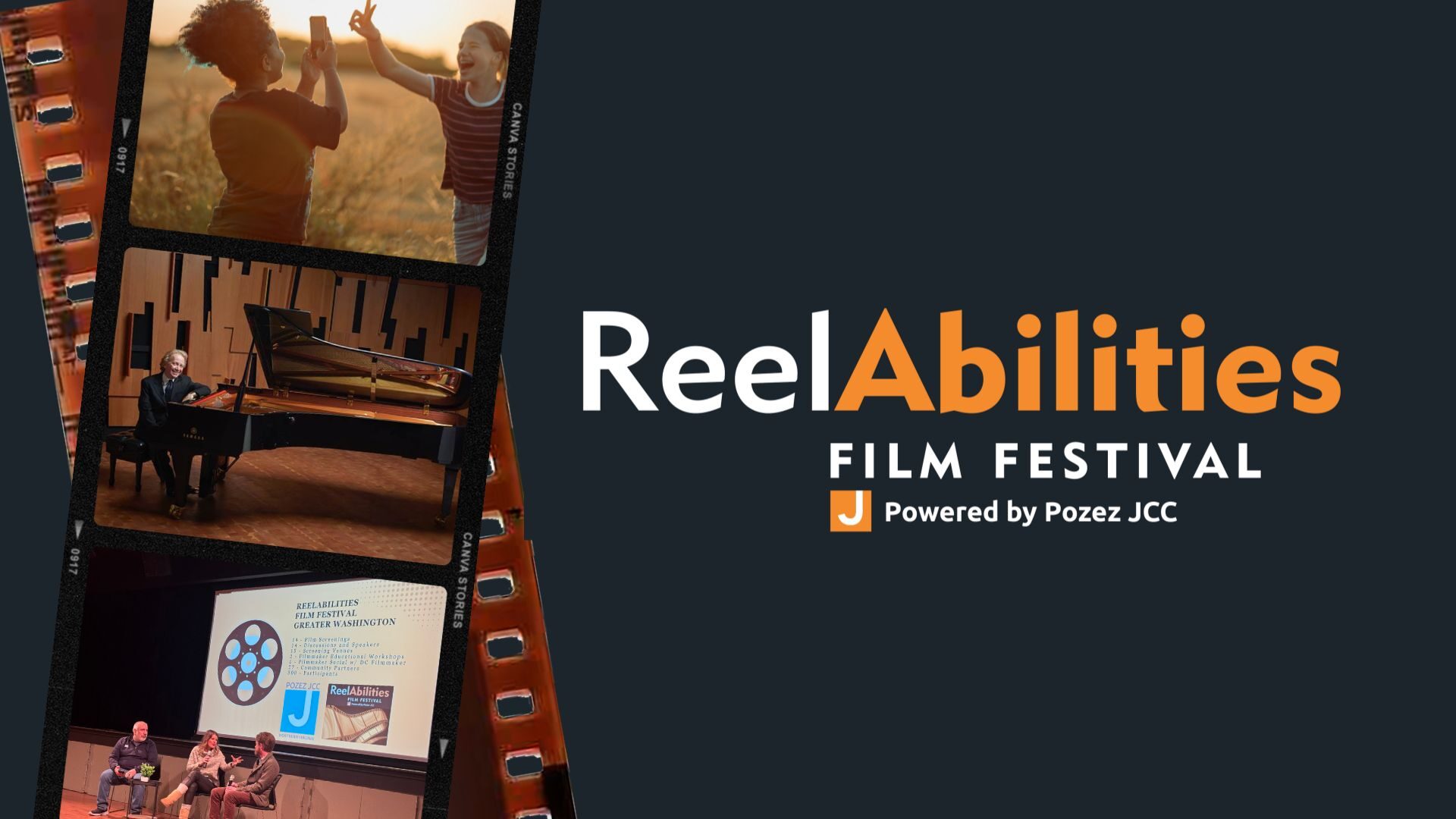
Conversation with the Curator: Four Questions with cartoonist and retired psychologist, Jim Wise
Comics and cartoons certainly seem to be having a moment, and maybe because many of us recognize a collective need to lighten up and laugh over the satire. Artists are still here for us, turning a mirror on reality – however crude the reality and the mirror – as a reminder of our shared humanity.
Can we lighten up and use humor to bring joy to others? Local “Artoonist” Jim Wise and his co-illustrators Larry Wiedman and Ola Betiku think so. And I agree. Giggle and groan with us in the Bodzin Art Gallery through July 1 and learn more about Jim’s process behind gag artoons below.
1. When did you start making cartoons, and what keeps you going?
I began cartooning back in my college days when I had the privilege of writing my own byline column, “On the Loose.” Back then, I wrote mainly political and satirical articles, sometimes drawing cartoons to supplement the content of my columns. In retrospect, I’d have to admit my graphic “artistry” left much to be desired. After college, my interest in writing continued. I resumed cartooning when I was close to retirement and “wisely” chose to employ skilled illustrators, Larry Wiedman and Ola Betiku, to visually convey my concepts. What keeps me going, I think, is bringing joy and laughter to others.
2. How did you gravitate to the medium and style you are working in?
I suppose I gravitated to cartooning as a way to combine my love of writing humor in a medium that allows for a quick turnaround from creation to completion to sharing with others. Historically, cartoons have always appeared in art galleries in various formats (single panel, comic strips, pop art etc) and there are a few museums in this country and abroad that focus solely on cartoons. My particular contribution is in creating single panel gag cartoons such as seen in the New Yorker or other publications and massively enlarging, digitally printing, mounting, framing and displaying them in solo art gallery exhibits as “artoons.”
3. You are a retired psychologist. Did humor and art play a role in your career, and does your experience helping people lend itself to inspiring your humor and art?
Early in my career I realized that it is impossible to stay angry, depressed and anxious when laughing. With some patients, I sometimes found that a humorous story that resonated with them worked better than Prozac and with far less side effects.
I think my professional work, observing the many facets of human behavior through a humorous lens, provided me with a gold mine of material as a writer and cartoon creator.
4. Do you have any advice to share with aspiring artists?
Here is my advice: First, it is imperative that as an aspiring artist you believe totally in your art, no matter what. Even if critics say you have no talent, that your art sucks, that art galleries will not exhibit your work unless you provide barf bags for visitors – do not be deterred. Secondly, you must devote 100% to your art, even if that means quitting your job, ending your marriage, having your kids forget who you are, and even your dog seeking a new owner. Eventually, you may end up living on the street, begging for change, rooting through garbage cans for scraps to eat. Then, one day, you may find yourself facing your darkest hour, realizing that no one may ever know or care about your art while you are alive or gone. This is the time, my friend, that you need to remember the story of Arnold Snerdly. Whom, you may ask, is Arnold Snerdly? Exactly.









